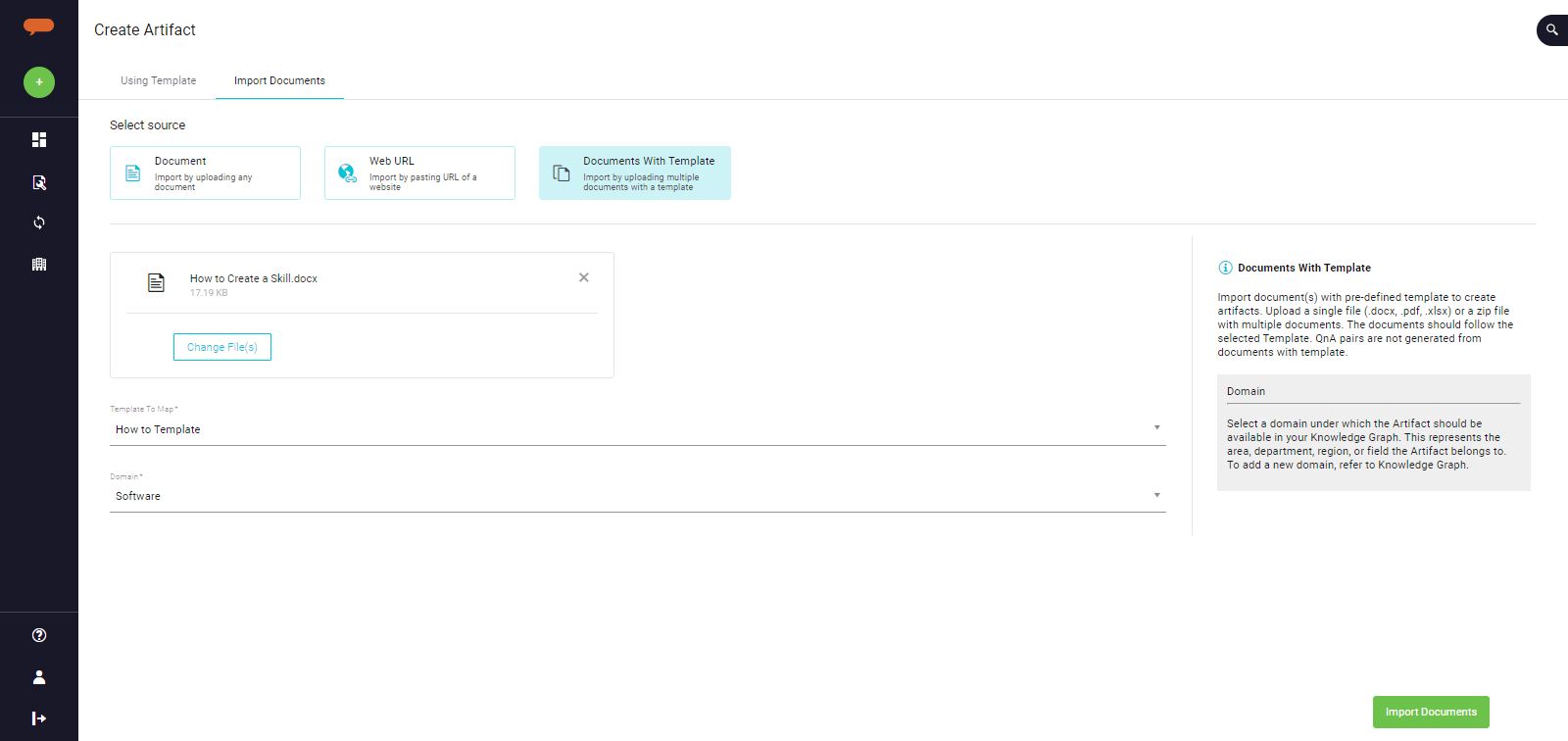...
On the Create Artifact page, navigate to Import Documents.
select Select Documents With Template as Source.
Click on Choose File(s) and browse to the required file. You may add multiple files or upload a zip file to import multiple files. You may also drag and drop the required files.
Select Template to Map. The selected template is used to validate and map the information in the uploaded document(s) to the template fields for Artifact and Ontology generation.
Select a domain from the Domain list. This represents the area, department, region, or field the Artifact belongs to. The Domains available in the list are available out-of-the-box. To update the list, refer to Adding a new domain on Knowledge Graph.
Click on Import Documents.
The selected documents are now queued for Artifact creation. Luma Knowledge validates the document based on the selected Knowledge template and creates Artifact. The new Artifact(s) is linked to the selected template. Artifact details are extracted from the document. The information available in the various sections (text and media content) are mapped to the template fields.
The Artifact state is determined based on the Artifact Publishing Mode configuration for your tenant and the identified ontology. Refer to Tenant Configurations for more information.
Click on Check Progress to view the Import status where you can view details on the Documents imported and artifacts created.
| Info |
|---|
Points to Remember: |
| Info |
The administrator can configure the maximum file size allowed for the supported Source document formats. If the source document exceeds the permitted size, Luma Knowledge presents an error message, and the Artifact creation fails. Refer to Tenant Configurations for more information.
|
Import Status
On Import Status, you can view the historical information on the Documents imported for Artifact creation (with Knowledge Templates). Here you can find the list of import requests, files imported, and the completion status.
...
Click on the Import request to view the list of documents imported and their respective Artifact creation status. Each document is considered a source file, so Luma Knowledge processes each document to create an Artifact. For Successful uploads, a new artifact is created and the system generates ontology from the Summary. You can click on the Artifact ID to view the Artifact details in Knowledge Store.
The new Artifact(s) is linked to the Knowledge template selected at upload. The following Artifact details are extracted from the document:
Artifact Name: Document name
Artifact Summary: First paragraph in the document
Artifact Contents: Based on the selected template, document contents are mapped to the template fields (text and media content).
Artifact state is determined based on the Artifact Publishing Mode configuration for your tenant and the identified ontology. Refer to Tenant Configurations for more information.
...
Failure scenario:
If the uploaded document does not follow the selected Knowledge Template or the document does not contain the mandatory details required to create artifacts, the upload fails. In such a case, Artifact is not created. You can hover over the Message to view the error details and retry document upload with an updated document.
...
|
